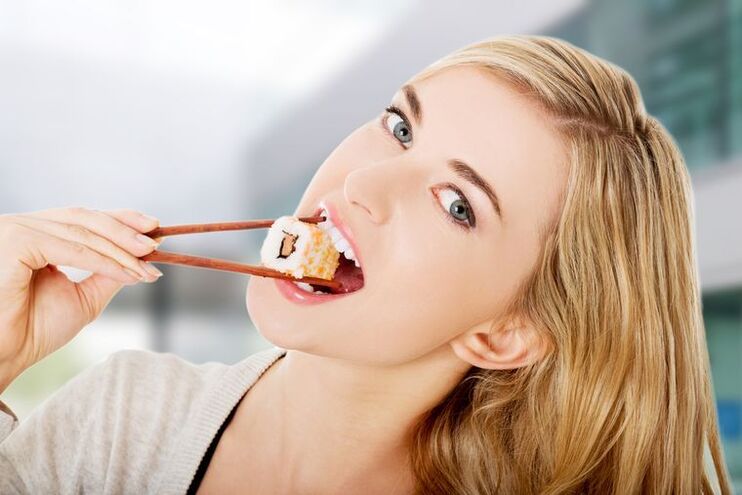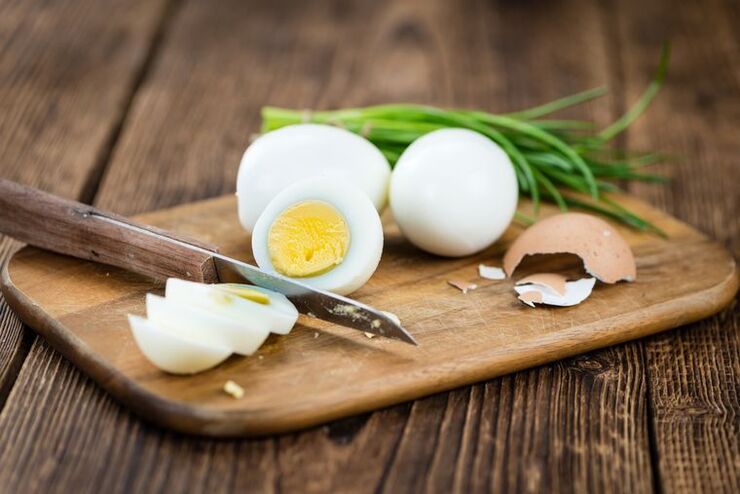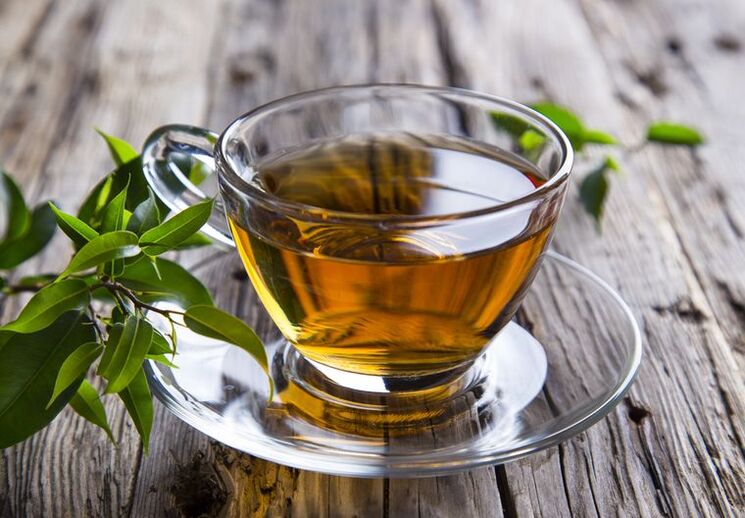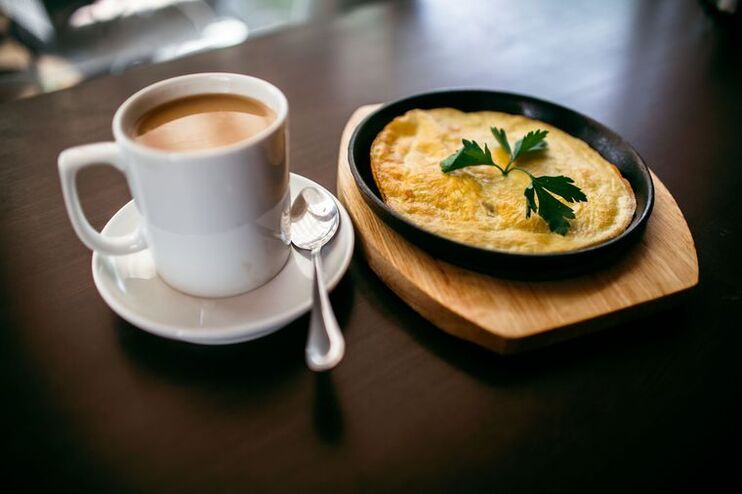Everyone knows the megal -efficient "Japanese" diet.But only a few people know that they have options that enable the use of food products at all.What can be eaten in the "Japanese", read in the article.

The "Japanese" sleepless diet is a popular weight loss technique that has won the trust of many women and men due to its effectiveness.The principle of its effect is low, rich in proteins and activates the processes of burning fat deposits in the body.Traditional Japanese lasts 21 days: 7 days of preparation, 14 days of nutrition and a 4 -week output.
Most of the lost weight finds that this technology requires psychological preparation and strong motivation.However, the results are an effort: in 14 days ("classic" version) you can decrease by 5-15 kg depending on the original weight.In addition, the main step is to get out of the diet that requires no less exposure.If you do not violate the conditions, the problem of overweight remains in the past.
Regulate
- Use only these products.
- The sequence of days and meals cannot be changed.
- Salt, sugar, alcohol, confectionery and flour products (with the exception of these) are completely excluded from nutrition.
- Every day you should drink 1.5 to 2 liters of clean water without gasoline.
- If you don't use coffee, drink green tea without additives and flavors.
- The zucchini can be replaced by one of the following products: beets, pumpkin, cooked or fried carrots, Tsukkini, Pasternak root.This replacement does not affect the result of losing weight (subject to all rules).
- The zucchini (or alternative zucchini vegetables) can be baked in foil and has been added with the 1st teaspoon of vegetable or olive oil.
- A raw egg can either be excluded or replaced by cooked.
- It can consume green or herbal tea between meals.
- Before you start, you have to consult a specialist.
- You cannot repeat more than twice a year.
Professionals
- Effective weight loss in a short time.
- The availability of the products provided.
- A certain menu (without counting the food and energy value of dishes).
- Three meals (easy to combine with studies or work).
- The body is cleaned by toxins because they do not consume sugar, alcohol and salt for two weeks.
- Squirrel is available in sufficient quantities - this prevents the loss of muscle mass.In addition, a lot of energy is spent on the digestion and assimilation of protein, which accelerates the metabolism.
Disadvantages
- Low calorie content of the diet.
- The unbalanced ratio of proteins, fats, carbohydrates and a lack of basic vitamins, macro and trace elements.The consequence of this is a deterioration in the condition of skin, nails and hair, a decrease in immunity.Therefore, complex vitamins must be taken during the Japanese diet.
- The lack of a full breakfast deprives the body that is necessary for him in the morning and increases the risk of an evening break.
- Big breaks between meals.
- The transition to normal nutrition can become a quick return.
Preparation
The preparation of the body is an integral phase of Japanese salt freedom.A week before it gives up fast food, the number of sweets, flour and fat dishes minimizes, the usual portions by 20%reduce the daily high speed of your diet should be reduced by 500 calories.Try to eat dinner at least three hours before going to bed and drink at least 1.5 liters of clean water a day.After waking up at room temperature, drink 250 ml of water.This activates the metabolism and is better transferred to the lack of breakfast during this time.
Menu
For 7 days
Day 1
- Breakfast: black coffee.
- Lunch: 2 cooked eggs, 150 g salad (Beijing -Kohl + Carrots + 1 Teaspoons of vegetable oil), 200 ml of tomato juice.
- Dinner: 150 g of cooked pollen, 100 g Beijing Kohl + 1 teaspoon of olive oil.

Day 2
- Breakfast: toast from rye bread (15 g), black coffee.
- Lunch: 200 g baked cod, 150 g Beijing -Kohl + 1 teaspoon of vegetable oil.
- Dinner: 200 g of cooked beef, 200 ml of kefir (2.5% fat).
Day 3
- Breakfast: black coffee.
- Lunch: 1 cooked egg, 150 g grated carrots + 1 teaspoon of vegetable oil.
- Dinner: 2 apples.
Day 4
- Breakfast: toast from rye bread, black coffee.
- Lunch: 1 average zucchini, fried in vegetable oil, 2 apples.
- Dinner: 200 g of cooked beef, 2 cooked eggs, 150 g Beijing cabbage.
Day 5
- Breakfast: 150 g grated carrots with lemon juice.
- Lunch: 200 g baked HEK, 200 ml of tomato juice.
- Dinner: 200 g baked HEK, 150 g Beijing Kohl.
Day 6
- Breakfast: black coffee.
- Lunch: 300 g boiled chicken breast, 150 g salad (Beijing -Kohl + Carrots).
- Dinner: 2 cooked eggs, 150 g grated carrots + 1 teaspoon of vegetable oil.
Day 7
- Breakfast: green tea.
- Lunch: 200 g cooked beef, 200 g fruits (until season).
- Dinner: one of the previous options.
For 9 days
The menu for 7 days of 9-day Japanese nutrition does not differ from the option on the 7th day.
Day 8
- Breakfast: green tea.
- Lunch: 200 g cooked beef, 2 apples or 1 orange.
- Dinner: 200 g baked HEK, 150 g Beijing Kohl.
Day 9
- Breakfast: black coffee.
- Lunch: 200 g salad (carrots + cabbage), 150 g cooked chicken breast, 2 cooked eggs.
- Dinner: 150 g grated carrots + 1 teaspoon of vegetable oil.
Products required for 13-day and 14-day Japanese diet
- Natural coffee (in grain or floor) - 1 pack.
- Fresh eggs - 20 pieces.
- Fish fillet - 2 kg.
- Green tea without flavors - 1 pack.
- Beef - 1 kg.
- Chicken breast - 2 kg.
- Olive oil.
- Plant oil.
- Carrots - 2 kg.
- The cabbage is freshly white or Beijing - 2 - 4 parts (depending on the size).
- Zucchini - 1 kg.
- Apples (or other fruits) - 1 kg.
- Tomato juice (without sugar) - 2 l.
- Kefir - 1 l.
- Lemon 3-5 parts.
- Rye bread - 1 loaf.

For 13 days
Day 1
- Breakfast: black coffee.
- Lunch: 2 cooked eggs, 150 g salad (Beijing Kohl + carrots + 1 teaspoon of olive oil), 200 ml of tomato juice.
- Dinner: 200 g cooked cod.
Day 2
- Breakfast: Black coffee and a cracker made of rye bread (15 g).
- Lunch: 200 g cooked pollen, 150 g salad (cabbage + carrots + 2 teaspoons olive oil).
- Dinner: 100 g of cooked beef, 200 ml of tomato juice.
Day 3
- Breakfast: Black coffee and a cracker made of rye bread (15 g).
- Lunch: 1 average zucchini, fried in vegetable oil.
- Dinner: 2 cooked eggs, 200 g of cooked beef, 100 g Beijing cabbage + 1 teaspoon of vegetable oil.
Day 4
- Breakfast: black coffee.
- Lunch: 1 raw egg, 100 g grated carrots + 1 teaspoon of vegetable oil, 15 g solid cheese.
- Dinner: 200 g of fresh fruits for the season.
Day 5
- Breakfast: 100 g grated carrots + 2 tablespoons of lemon juice.
- Lunch: 200 g baked cod, 200 ml of tomato juice.
- Dinner: 200 g fruit.
Day 6
- Breakfast: black coffee.
- Lunch: 300 g cooked chicken breast, 100 g salad (cabbage + carrots).
- Dinner: 2 cooked eggs, 100 g grated carrots + 1 teaspoon of olive oil.
Day 7
- Breakfast: green tea.
- Lunch: 200 g of cooked beef, 150 g fruits.
- Dinner: 2 cooked eggs, 100 g grated carrots + 1 teaspoon of olive oil.
Day 8
- Breakfast: black coffee.
- Lunch: 250 g cooked chicken breast, 150 g salad (carrots + cabbage).
- Dinner: 2 cooked eggs, 150 g grated carrots + 1 teaspoon of vegetable oil.
Day 9
- Breakfast: 100 g grated carrots + 2 tablespoons of lemon juice.
- Lunch: 200 g baked pollen, 200 ml of tomato juice.
- Dinner: 200 g fruit.

Day 10
- Breakfast: black coffee.
- Lunch: 1 raw egg, 150 g grated carrots + 1 teaspoon of vegetable oil, 15 g solid cheese.
- Dinner: 200 g fruit.
Day 11
- Breakfast: black coffee, crackers from rye bread (15 g).
- Lunch: 1 zucchini fried in vegetable oil.
- Dinner: 2 cooked eggs, 200 g cooked beef, 100 g fresh cabbage + 1 teaspoon of vegetable oil.
Day 12
- Breakfast: black coffee, crackers from rye bread (15 g).
- Lunch: 200 g baked HEK, 150 g fresh cabbage + 1 teaspoon of olive oil.
- Dinner: 100 g of cooked beef, 200 ml of kefir (2.5% fat).
Day 13
- Breakfast: black coffee.
- Lunch: not provided.
- Dinner: 2 cooked eggs, 200 g boiled cabbage + 1 teaspoon of olive oil, 200 ml of tomato juice.
For 14 days
Day 1
- Breakfast: black coffee.
- Lunch: 2 cooked eggs, 200 g boiled cabbage + 1 teaspoon of vegetable oil, 200 ml of tomato juice.
- Dinner: 200 g cooked or baked HEK.
Day 2
- Breakfast: 20 g rye bread, black coffee.
- Lunch: 200 g cooked pollen, 150 g boiled cabbage + 1 teaspoon of vegetable oil.
- Dinner: 100 g of cooked beef, 200 ml of kefir (2.5% fat).
Day 3
- Breakfast: 20 g rye bread, black coffee.
- Lunch: 1 average zucchini, fried in vegetable oil.
- Dinner: 200 g cooked beef, 2 cooked eggs, 150 g of fresh cabbage + 1 teaspoon of vegetable oil.
Day 4
- Breakfast: 1 fresh carrots, black coffee.
- Lunch: 200 g cooked pollock, 200 ml of tomato juice.
- Dinner: 200 g fruit.
Day 5

- Breakfast: 1 fresh carrots, juice of a lemon (you can dilute water).
- Lunch: 200 g cooked HEK, 200 ml of tomato juice.
- Dinner: 200 g fruit.
Day 6
- Breakfast: black coffee.
- Lunch: 300 g cooked chicken breast, 200 g salad (fresh cabbage + carrots + 1 teaspoon of vegetable oil).
- Dinner: 2 cooked eggs, 1 fresh carrots.
Day 7
- Breakfast: green tea.
- Lunch: 200 g of cooked beef, 2 apples.
- Dinner: one of the previous options, except on the 3rd day.
Day 8
- Breakfast: black coffee.
- Lunch: 300 g cooked chicken breast, 150 g salad (cabbage + carrots + 1 teaspoon of vegetable oil).
- Dinner: 2 cooked eggs, 1 fresh carrots + 1 teaspoon of vegetable oil.
Day 9
- Breakfast: 1 fresh carrots, juice of a lemon.
- Lunch: 200 g cooked HEK, 200 ml of tomato juice.
- Dinner: 200 g fruit.
Day 10
- Breakfast: black coffee.
- Lunch: 50 g hard cheese, 100 g grated carrots + 1 teaspoon of vegetable oil, 1 cooked egg.
- Dinner: 200 g fruit.
Day 11
- Breakfast: 20 g rye bread, black coffee.
- Lunch: 1 average zucchini, fried in vegetable oil.
- Dinner: 200 g cooked beef, 2 cooked eggs, 150 g of fresh cabbage + 1 teaspoon of vegetable oil.
Day 12
- Breakfast: 20 g rye bread, black coffee.
- Lunch: 200 g cooked pollen, 150 g fresh cabbage + 1 teaspoon of vegetable oil.
- Dinner: 100 g of cooked beef, 200 ml of kefir.
Day 13
- Breakfast: black coffee.
- Lunch: 2 cooked eggs, 200 g boiled cabbage + 1 teaspoon of vegetable oil, 200 ml of tomato juice.
- Dinner: 200 g cooked or baked pollen + 1 teaspoon of vegetable oil.
Day 14
- Breakfast: black coffee.
- Lunch: 200 g cooked or baked HEK, 150 g fresh cabbage + 1 teaspoon of olive oil.
- Dinner: 200 g cooked beef, 200 ml of kefir.
Exit from nutrition
The first week of leaving the Japanese diet is an extremely important time.At this point, the body continues to lose weight and adapts to new parameters.It is therefore important not to fall on food, but to slowly insert the usual products into nutrition.You should only be natural.
- In order for the result to be determined, the diet should be gradually.The exit time should take twice as long.The duration of the 14-day Japanese diet should therefore be at least 28 days of duration.
- In the first week, gradually increase the portions of meat and fish dishes - around 50 g, vegetables - by 100 g.
- For breakfast, use grain that are prepared on the water (buckwheat, oatmeal, rice) and omeletts.Your one -time part should be approximately 200 g.
- Single to food and do not add more than 5 g salt per day at the beginning of the release.
- During the day you have to make 2-3 snacks from suction milk products and fruits.
- Replace the fruit dinner with a complete meal of vegetables and proteins (e.g. 200 g of vegetables and a steamed chicken schnitzel).
- Do not reduce the amount of protein food.
- Eat fractional (5-6 times a day).
An estimated menu for leaving the Japanese diet for 2 weeks
Day 1-3
- Breakfast: omle of 2 eggs and 150 ml milk (2.5% fat), 1 bread, black coffee.
- Lunch: 200 g cooked beef or 200 g baked cod, 100 g of fresh vegetables.
- Dinner: 100 g cottage cheese (5% fat) or 250 ml kefir (2.5% fat) and 1 apple.
Day 4-6
- Breakfast: 200 g oatmeal in water (without sugar and oil).
- Snack: 1 orange, 1 kiwi.
- Lunch: 200 g baked chicken breast, 100 g of fresh vegetables (cabbage, carrots, pepper).
- Dinner: 200 g cooked shrimp or 150 g of cottage cheese (7% fat), 1 cucumber.
Day 7-10
- Breakfast: 200 g oatmeal on water without sugar and oil, 2 toast (20 g each).
- Snack: 1 fruit.
- Lunch: 200 g of vegetable soup, 100 g boiled beef.
- Snack: 100 g natural yogurt.
- Dinner: 200 g baked chicken breast, 150 g cooked of vegetables.

Day 8-14
- Breakfast: 200 g porridge with nuts, dried fruits and honey (no more than the 1st teaspoon), 2 toast (20 g each).
- Snack: 1 fruit, 100 g natural yogurt or cottage cheese (5% fat).
- Lunch: 200 g of each soup on low -fat chicken broth, 150 g of cooked chicken breast, 2 fresh cucumbers.
- Snack: 1 fruit or 150 g natural yogurt.
- Dinner: 200 g cooked mussels, 150 g of vegetables.
- Snack: 200 ml Kefir (2.5% fat).
Sport during the Japanese diet
If your body is used to a certain amount of physical exertion (for example three times a week morning run or fitness), the frequency and intensity of the training should not be increased - this can cause deterioration in the borehole (loss of starch, dizziness, nausea) to worsen the borehole.It is recommended to carry out daily charging (20-30 minutes), at least one hour a day on foot and replace the elevator with via ferrata levels.
Contraindications
- Diseases of the stomach intestine tracts (gastritis, gastrodeitis, stomach ulcers or duodenum).
- During pregnancy and during lactation.
- All chronic diseases of the kidneys and liver.
- Anemia.
- Avitaminosis and hypovinosis.
- Acute infectious diseases.
- Diabetes.
- Zelchokamenny disease.
- All states in the hit level.
- Chronic diseases of internal organs

























